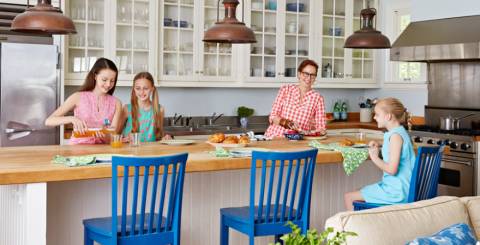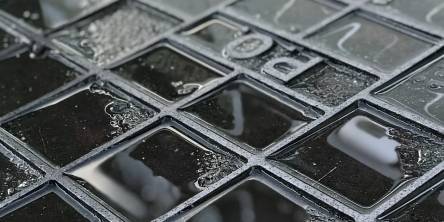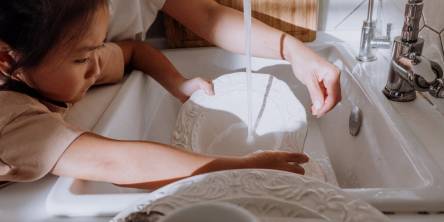Five Ways to Make Your Kitchen Safer and More Child-Friendly

“Life is a kitchen. Put on your prettiest apron and whip up something incredible and then...eat!” -Unknown
“Kitchens are made for bringing families together.” -Unknown
Kitchen [kich-uhn]-noun: 1.) A gathering place for friends and family. 2.) A place where memories are homemade and seasoned with love.
Apart from being the top contender for being the most used room in the house, the kitchen is considered the heart and soul of the home. It is that one definitive area of the house that brings the family together to dine and have meals. As it is often the space where all family members congregate and spend a great deal of time, the kitchen is not only an area for eating and preparing food, it is also where memories are formed and fostered. However, while the kitchen may be one of the most beloved places in a home, it can potentially be one of the most dangerous areas as well. Apart from it being the obvious area where you store your cutlery equipment, stove, and other appliances, it is also where you store a potentially explosive agent such as the LPG (such as your solane gas) used to cook your food. To prevent fires and potential home hazards, here are a few ways to make your kitchen’s safer for you and for everyone.
1.) SECURE DANGEROUS KITCHEN ITEMS AND APPLIANCES
It is imperative that you store your kitchen cutlery equipment such as scissors, knives, and even forks should be kept in a place out of the reach of small children. Similarly, your glassware should also be kept in a cupboard that is beyond their reach as these can easily break and cause potential injury. Appliances with sharp edges should also ideally have covers or at least be secured. Food processors should be stored properly as curious small hands can easily reach into a dangerous spot.
2.) CONSISTENTLY SEPARATE NON-FOOD CONTAINERS
Even if your kids take a more active role in feeding themselves and most especially if they are at an age where they are curious, it is important to make very clear distinctions as to what is food and not food in your home. One way of doing this is to buy containers that are similar to each other for storing food and do the same for non-food material. It would help your kids easily identify what they can eat and what they cannot eat. Growing children are incredibly curious—especially when a certain non-food item is colorful and attractive to the eye. With this is mind, make sure to have distinctive containers for food and keep the items in separate spaces.
3.) LOCK UP POISONOUS SUBSTANCES
Items such as medicine tablets, pills and even up syrups should be kept away from reach. In the same vein, kitchen cleaning items such as bleach wipes, dishwasher detergent, soap, and polish should also be kept locked away. Always keep your child’s safety in mind when it comes to storing potentially harmful and poisonous substances. Ideally, you should have a cabinet or a drawer in your kitchen which you can lock and keep secure or at least one that has a child safety lock installed.
4.) PAY ATTENTION TO THE OVEN
Your oven and your LPG are two potential fire hazards in your home considering that the oven (or the range) is not exactly an easy appliance to unplug and can easily be within a child’s reach. However, there are ways of making this safer. If you are unable to choose an oven that has a safety feature such as a nifty lock that would ensure kids do not get to use it, at least choose one that is well insulated to ensure that it would not cause burns if it is touched when in used. Additionally, always keep the oven doors closed regardless of whether it is in use or not and install child-resistant knob covers to prevent children from turning the oven on by themselves.
5.) TAKE PRECAUTIONS WHEN COOKING
The most important practice you can probably do to ensure that your kitchen is a safe place in your home is to ensure that you take the necessary precautions when you are cooking. This would mean everything from checking the LPG for leaks down to paying apt attention to what you are cooking. Remember that when pots are in use and are atop the stove, this presents a risk for children which includes burn hazards. As much as possible, use the back burners and stove handles should always point towards the back to avoid accidental spills. Lastly, set a good example by using oven mitts when handling hot pans and dishes. When all else fails, place your child in a contained place or in a high chair that is out of harm’s way.
Similar Articles
Learn how a tidy home boosts mental health, reduces stress, improves productivity, and enhances well-being with simple, practical cleaning tips.
Have you ever harboured dreams of constructing your dream home filled with bespoke designs, carefully selected fittings and high-quality finishes? Have you ever fretted over the durability, aesthetics, and overall quality of your construction project? Are you constantly in search for the perfect balance between beauty and strength?
Cockroaches are one of the most common pests found in homes and businesses, and they are known for their resilience and ability to thrive in even the most unsanitary conditions. These pests can quickly infest kitchens, bathrooms, and other areas, spreading bacteria, allergens, and other harmful pathogens.
A well-maintained yard drainage system is key to preserving the beauty and health of any property. Poor drainage can lead to standing water, soil erosion, and even foundational damage to structures over time.
Keep your seaside home in top shape with these 4 expert tips! Learn about weatherproof materials, smart maintenance, and managing coastal challenges effectively.
Explore the future of roofing! Discover energy-efficient materials, smart systems, and sustainable designs reshaping modern home construction trends.
HVAC stands for heating, ventilation, and air conditioning. These all-in-one systems keep your home comfortable and improve air quality throughout a building. Often used in commercial buildings, HVAC units are increasingly used in residential buildings.
Safeguard your home after storms with timely roof repairs. Detect damage early, choose durable materials, and rely on a pro for lasting protection and peace of mind.
Learn how to balance a clean home and family life with these 6 practical tips to manage clutter, involve kids in chores, and set realistic expectations.









